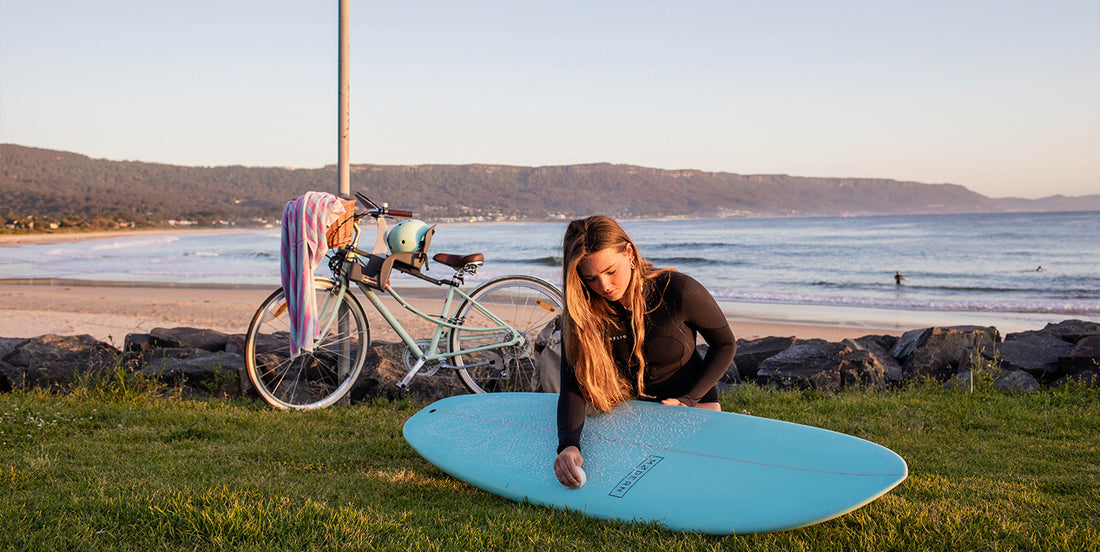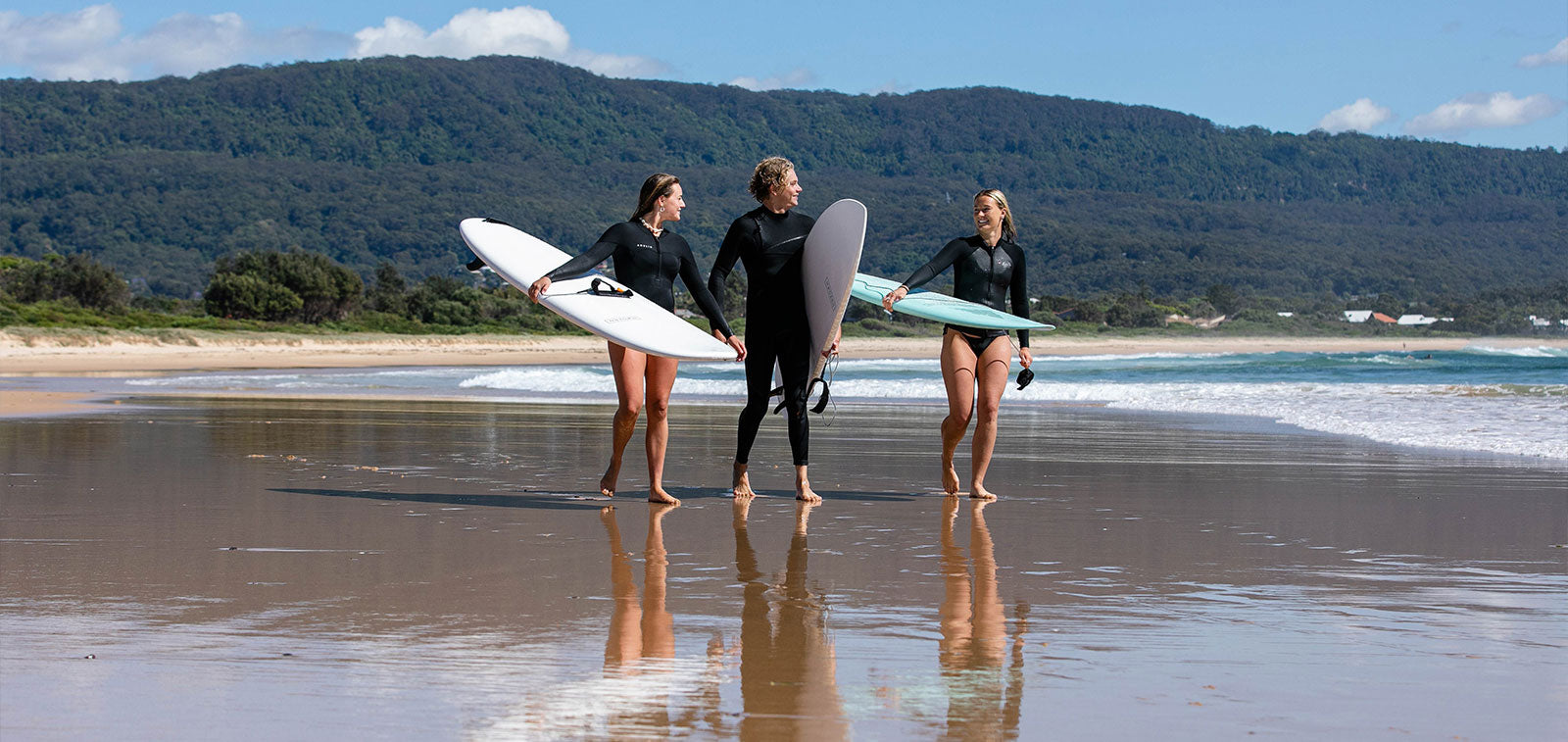
Surfboard Guide for Beginner and Intermediate Surfers
Share
One of the most important tools that any surfer needs is a good surfboard. The right surfboard will make all the biggest difference in your surfing experience, and it’s crucial that you choose one that suits your skill level, style, and needs.
How to Find the Right Beginner Surfboard Size
If you’re a beginner surfer, the process of choosing a surfboard can be quite overwhelming. There are so many different types of surfboards on the market, and each one is designed for a different purpose.
To help you navigate this process, we’re going to take a closer look at the surfboards that we produce and provide you with a guide to buying your first surfboard.
What’s the Best Surfboard Sizes for Beginners?
Step 1: Determine your skill level
The first step in choosing a surfboard is to determine your skill level. Are you a complete beginner, or have you been surfing for a while? This will help you decide which type of board to choose
If you’re a beginner, we recommend choosing a higher volume board or a foamie. These types of boards are more stable and easier to ride, which makes them ideal for beginners. The buoyancy of the board really increases your ability to paddle fast to be able to catch the wave. This is the most important factor.
We have a range of good beginner surfboards to choose from, along with the best intermediate surfboards. These include Epoxy Softboards, to the Modern Highline, Falcon or fantastic Modern Double Wide. Check out our range today.
Step 2: Consider your weight
Your weight will also play a role in choosing the right surfboard. You’ll need a board to provide you with enough floatation and stability to help you paddle fast and still pop up from laying down to getting to your feet easily.
We offer a range of good beginner surfboards in a range of sizes to suit all body types. Be sure to check the specifications of each board to make sure it’s the right size for you. For this we focus on the volume of the board. This is the amount of buoyancy the board has that will allow you to paddle it fast enough to catch the waves easily.
We suggest that you convert your weight to kilograms, and use the rule that 1 litre of volume in a surfboard offsets 1 kilogram of body weight. As a beginner you want to offset 100% of your body weight, as you get more confident this percentage can come down. A professional surfer might ride 30% of their body weight for instance.
You can also use our handy Surfboard Volume Calculator to find out which size board you need.
Step 3: Choose the right type of beginner surfboard
There are many different types of surfboards, each designed for a different purpose. Here’s a quick overview of the most common types of surfboards:
- Longboards: These are typically 9 feet or longer and are ideal for beginners. They offer stability and are great for catching smaller waves.
- Shortboards: These are smaller and more maneuverable than longboards. They’re designed for experienced surfers who want to go much faster on the waves.
- Fish-style boards: These are shorter and wider than shortboards with a flatter rocker and are designed for smaller waves. They’re great for surfers who want a more relaxed ride.
- Mid-Lengths and Funboards: These are a cross between a longboard and a shortboard. They offer the stability of a longboard and the maneuverability of a shortboard.
Global Surf Industries offers a range of surfboards in each of these categories. Take some time to research each type of board to determine which one is right for you.
Step 4: Consider the construction and materials
The construction and materials of a surfboard can affect its durability, weight, and performance. Here’s a quick overview of the most common materials used in surfboard construction:
- Epoxy: Our SLX Epoxy boards are lightweight and durable, making them a popular choice among surfers. They’re great for beginners and intermediate surfers.
- Polyurethane (PU): PU boards offer a more traditional feel. We make a lot of boards using this construction material.
- Epoxy Soft Foam: Our foam boards are ideal for beginners because they’re soft and forgiving. They’re also lightweight, making them easy to carry and maneuver.
Step 5: Pick what you think is right for you.
We are here to help. You can use our Live Chat function to ask questions about any or all of the boards. Our goal is to get you on the right board to start your surfing journey.
How Much Do Surfboards Cost?
Here at Global Surf Industries, we have a huge range of surfboard sizes for beginners to choose from, all available at different price points to suit your budget. Check out our range today. We have a sneaking suspicion it will be the best decision you’ve ever made.

